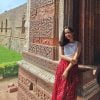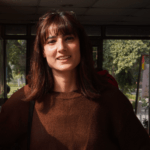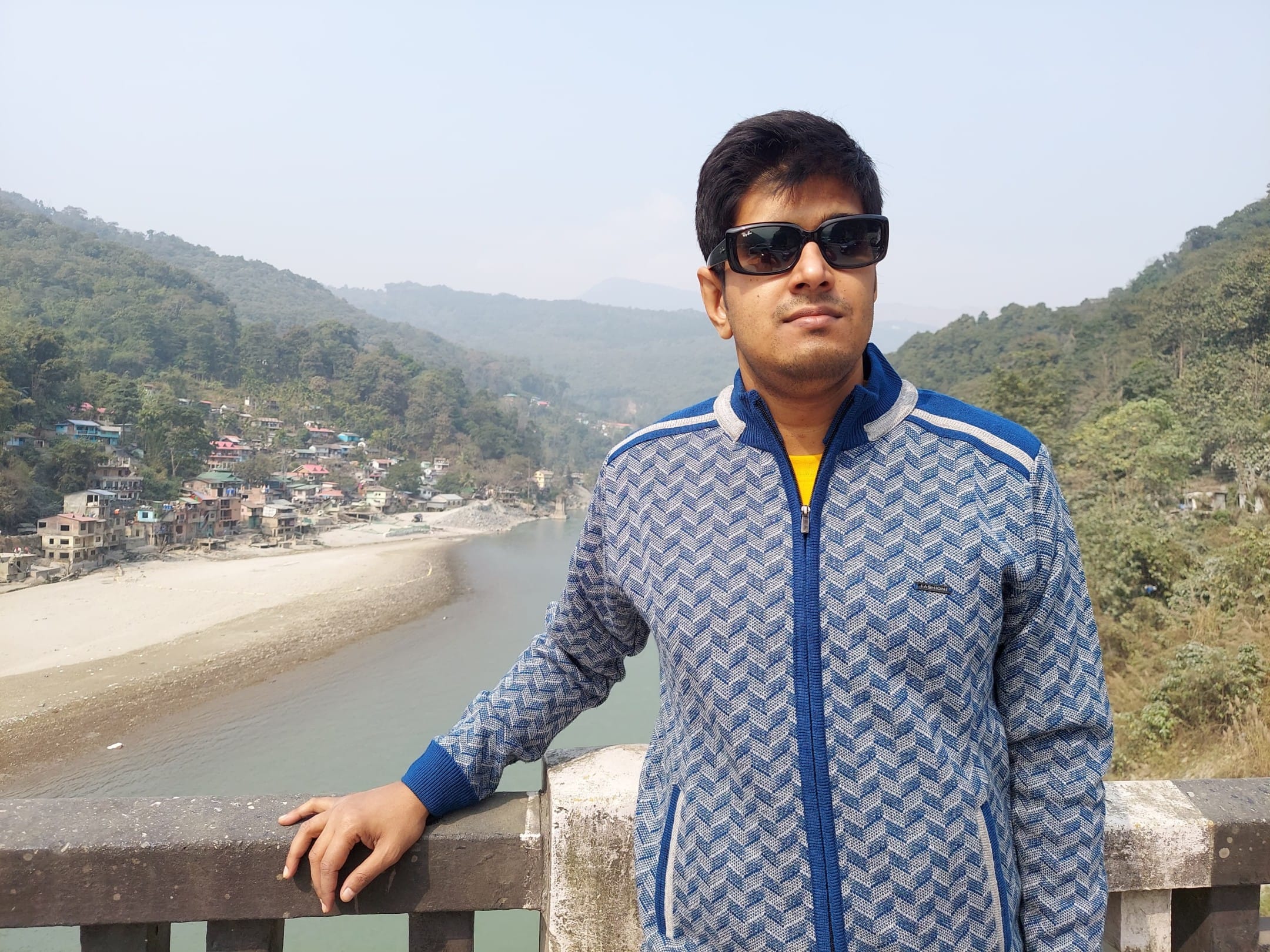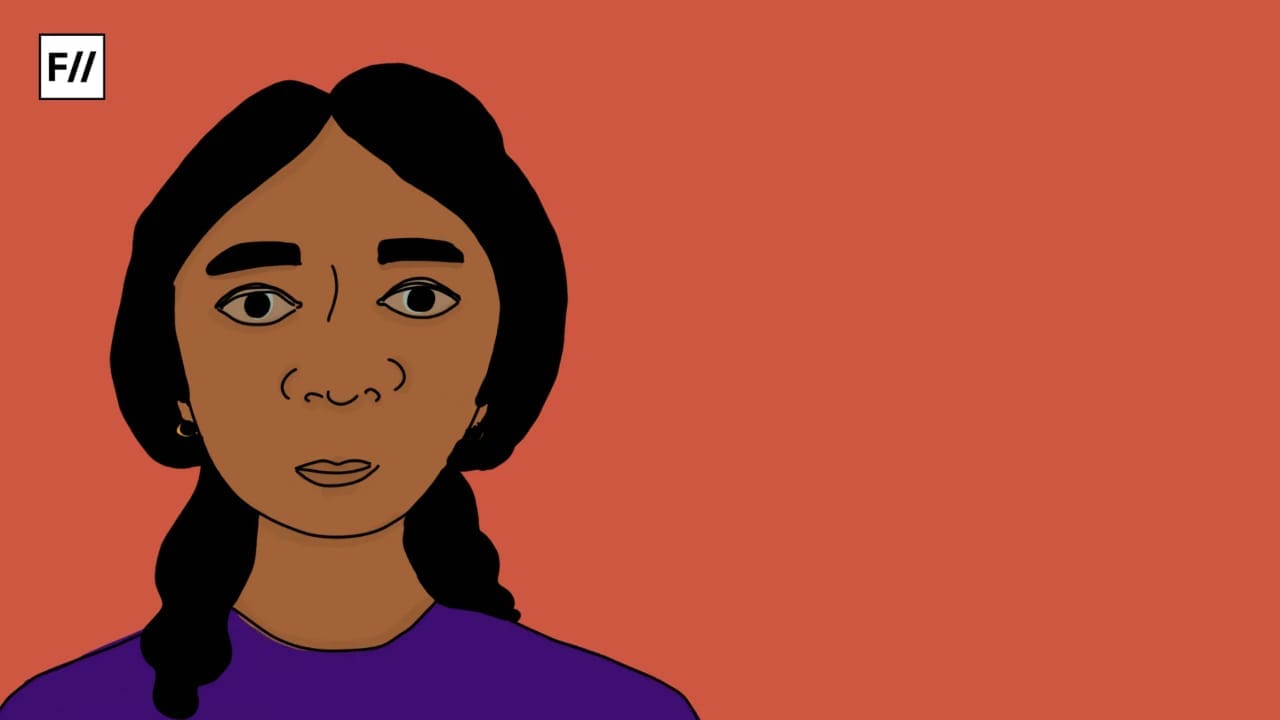In a post-pandemic world of shifting perspectives and changing cities, I moved to New Delhi for my graduation in 2022 at the University of Delhi; with pervasive homesickness and the optimism of a small-town, middle-class family, it seemed to me a massive dragon eager to swallow everything into its opulence. Negotiation with the dragon is still under process. Yet, there are moments when its magnanimity with flickering street lights and crowded buses crush the small town’s optimism of claiming a space in it for me. The gated colonies of this city regulate my mobility, modes of transport and even my attire.
In the women’s metro compartment, I once overheard a woman telling another younger woman to “prefer bridges over subways and always carry pepper spray” and reinstalling the norm that “Delhi is not safe for women” or rather the connoted meaning that Delhi doesn’t belong to women. The longer a woman lives in this city the stronger the argument becomes that walking from the metro station to your hostel at 11 pm is a political act in this city.
Amidst this dystopian reality, a classroom of a women-only college became a radical transformative space of discussions, student-teacher bondings, sisterhood and laughter. In contradiction to the classroom where the lecturer was at the centre of the discourse, the classrooms of the English Department dissociated the reader/student from the hegemony of the norm in theory for starters. Binaries became pejorative terms and all that seemed to be an apolitical mundane existence came under the scrutiny of a classroom filled with raging feminists.
In an introductory lecture to a course Applied Gender Studies the professor started with a quote from Kamla Bhasin’s non-governmental organisation Sangat which goes, “Me sarhad par khadi deewar nahi, us deewar me padi rhi darrar hu.” (I’m not the wall that divides, I’m the crack within those walls) Such courses were to ignite a questioning spirit that was expected to enshrine not on our answer sheet and term assignment but in our way of life. Maybe it was the texts and the discussions around them that forged comradeship that is there with you on your hospital beds.
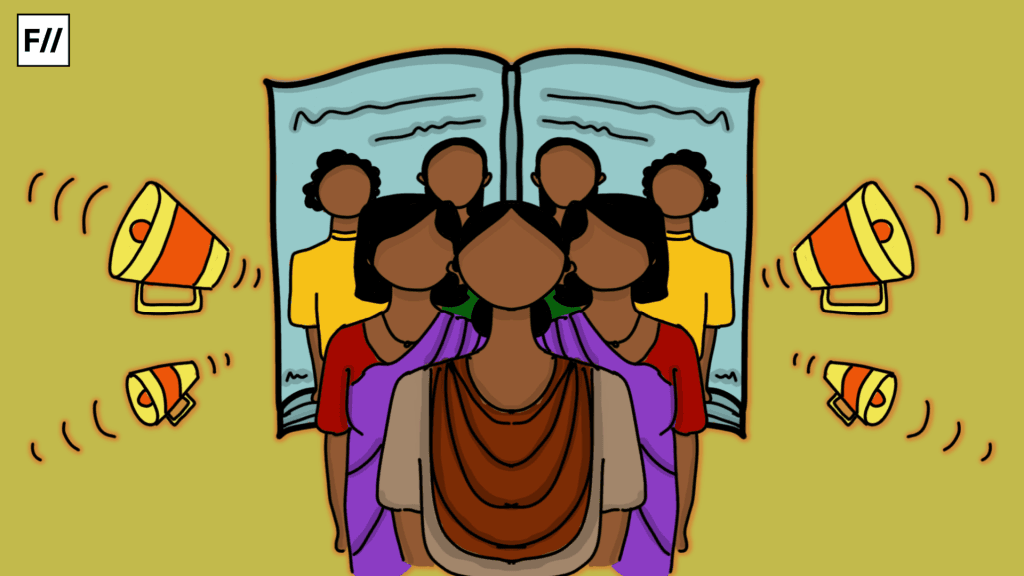
However, despite these discussions around intersectionality, inclusivity, feminism, identities, and a prolonged familiarisation with all such lexicons, the definition of feminist literature remained ambiguous. But the impact of this remains profound. It was material in the moments when a professor cries during her last lecture reading an excerpt from Urmila Pawar’s The Weave of My Life; when professors are displaced and the lamentation is a shared loss of the department and even when in the last few lectures we not just share more and more of the readings but also food with these radically “unacceptable” professors who taught us life was beyond the hetronormative norm and capitalist aspirations.
The madwoman left their attic to explore territories of this city in “restricted” time zones and carving homes out of each other. Walking in the lanes of Malviya Nagar at 3:00 am followed by a state of trance where we boosted each other in all honesty, breaking the norms of middle-class morality. Transgressions became a way of life and the performance became one that was a subject on the periphery of normative discourse questioning identity before adopting it.
The classroom taught that embracing intersectional inclusivity, where historically shaped identities are given a voice and supported in moving from the margins to the centre, could be a more politically correct approach to rejuvenation. Moreover, the margins need to be continually relocated and emphasised to challenge the concept of a centre itself. Inclusivity holds within itself the power of providing alternative mainstream, unconventional representations, and the possibility of an unimagined society.
As we read, discussed and wrote we found that emancipation was a shared longing. How do you draw a line between the mundane and the macrocosmic? These lines blurred when we criticised thinkers ranging from Plato to Freud; mocking them, laughing at their misogynism and participating in a space where agency wasn’t a subject of the patriarchal state.
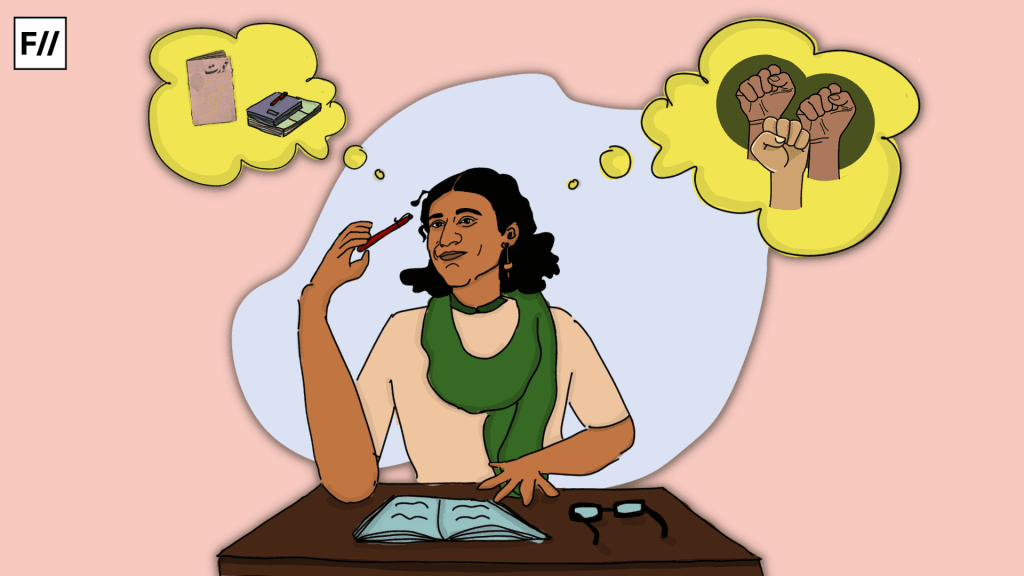
In one of such classroom lectures, we were reading Plato’s Republic. According to him for the state to function to its fullest all the kinships and familial relations must be broken. He imagined a world ruled by a Philosopher King where the children belong to the state. In this state, it must be ensured that a foster mother breastfeeding must not feed the same child regularly, as it may develop a mother-child bond between them. These gave us goosebumps as the Professor said, “How fragile is your Republic! My love is going to break it.” We discarded the classics and read Sapphic verses in leisure. We choose authors who said, “It is a thousand pities never to say what one feels.”
The aura of hysterical laughter which might have resulted in the persecution of these young women a few centuries back was a resilience that petrified a lot. This student-teacher bonding and comradeship forged a space where the agency was being articulated for a lifetime. While discussing the work of Babasaheb, Chinua Achebe, and Toni Morrison it became apparent that the diversity of the classroom was more than a safe space. While learning the lexicons of political correctness and undoing the silent repression of the household, the joy of expression became a means to self-discovery.
As I look back on this journey I guess this was what Plato was afraid of: a comradeship that holds the strength to question patriarchal republics, spaces that refuse the norms and classrooms that create rebels.
About the author(s)
Anchal is a writer, poet and spoken word artist based in New Delhi. Her works have been published on various platforms, including Enroute Indian History Blogs, Indian Review E-Journal and department and annual magazines of Miranda House, Kirori Mal College and Gargi College. Currently, she is pursuing an MA in English at Jawaharlal Nehru University, New Delhi and loitering around the city.

